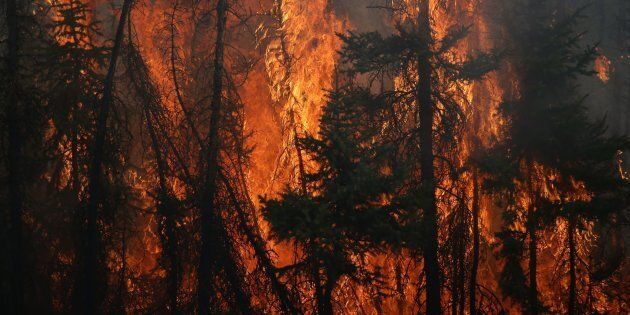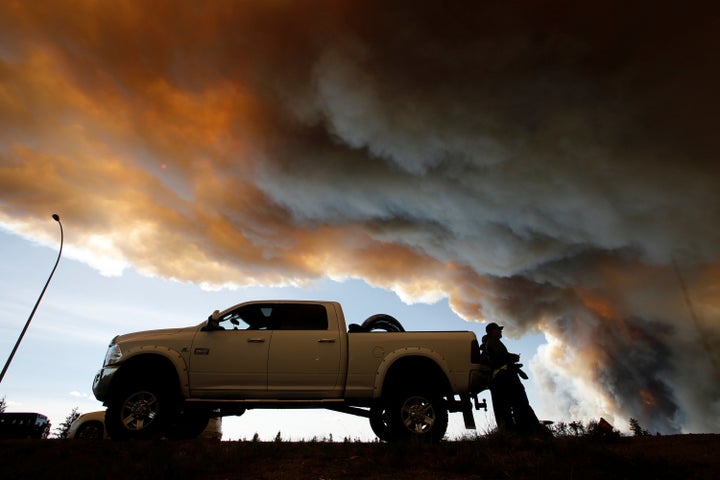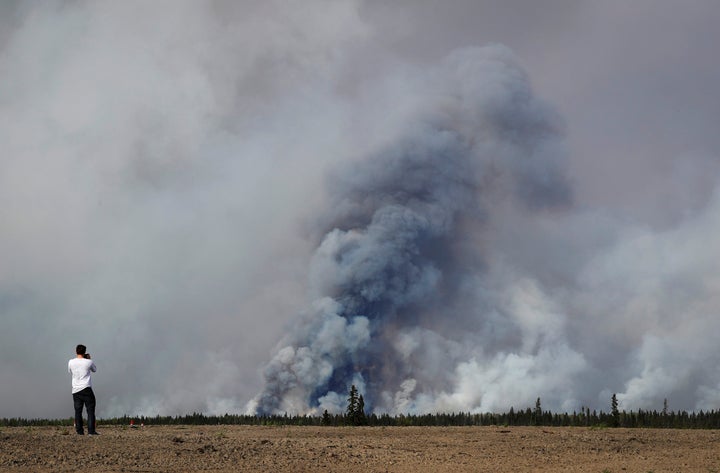

A raging Canadian wildfire that forced the evacuation of the Alberta oil town of Fort McMurray intensified on Saturday, helped by hot, dry weather, with police escorting a fresh convoy of evacuees out of the region.
The blaze, the largest of some 40 wildfires burning across the province of Alberta, has forced some 88,000 residents, the entire population of Fort McMurray, to flee for safety.
The weather, with temperatures on Saturday expected to rise as high as 28 degrees Celsius (82.4 Fahrenheit), was hindering efforts to fight the wildfire, said Matthew Anderson, a wildfire information official with the Alberta government.
"It's going to be a very extreme fire hazard kind of day," he told CBC News. "Today will certainly be a very, very challenging day and the (fire's) growth potential is quite large."
Earlier in the week most evacuees headed south by car on Alberta Highway 63, the only land route out of the area, in a slow-moving exodus that left many temporarily stranded on the roadside as they ran out of gasoline.

But other residents who initially sought shelter in oil camps and settlements north of the city found themselves cut off in overcrowded conditions. They were forced on Friday to retrace their route back through Fort McMurray on Highway 63 as flames continued to spread.
Television footage showed the first convoys of about 20 vehicles getting underway around 6 a.m. local time (1200 GMT) even as smoke from fires filled the sky.
The convoys on Friday moved about 2,500 vehicles of evacuees with 7,500 people south, according to a tweet from the Regional Municipality of Wood Buffalo.
The northbound lanes of Highways 63 and 881 toward Fort McMurray were restricted, and parts of Highway 881, the only road in and out of some evacuated communities south of the city, remain closed, Alberta's government said on Twitter.
Royal Canadian Mounted Police Sgt John Spaans told CBC authorities were not certain how many were still left to travel south.
The full extent of property losses in Fort McMurray has yet to be determined, but authorities said some 1,600 structures were believed to have been destroyed. One analyst estimated insurance losses could exceed C$9 billion ($7 billion).
Entire neighborhoods were reduced to ruins, but most evacuees fled without knowing the fate of their own homes. The majority got away with few possessions, some forced to leave pets behind.
At least 10 oil sand operators have cut production due to evacuations and other emergency measures that complicated delivery of petroleum by rail, pipeline and highway. [CRU/CA]
About half of Canada's oil sands production capacity has been taken offline by the conflagration, according to a Reuters estimate.
(Additional reporting by Ethan Lou in Toronto,; Writing by Jeffrey Hodgson; Editing by Digby Lidstone)